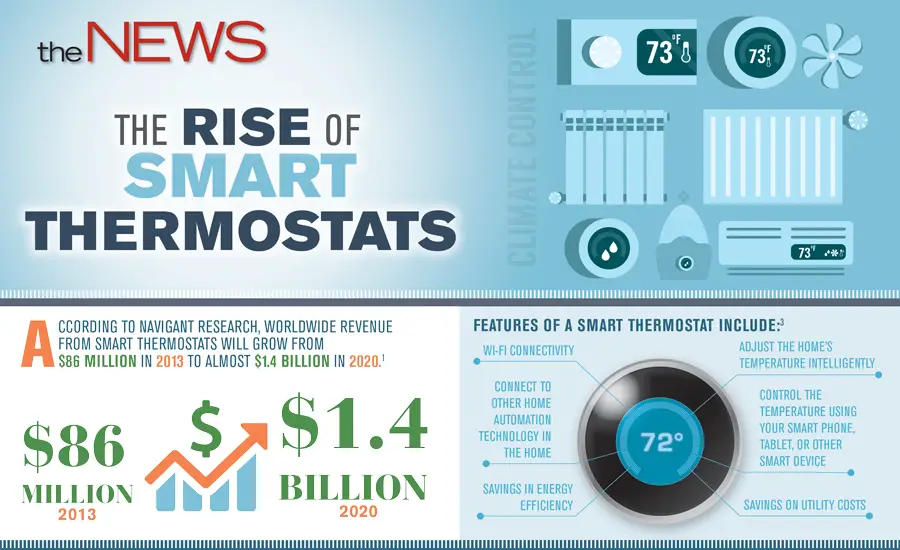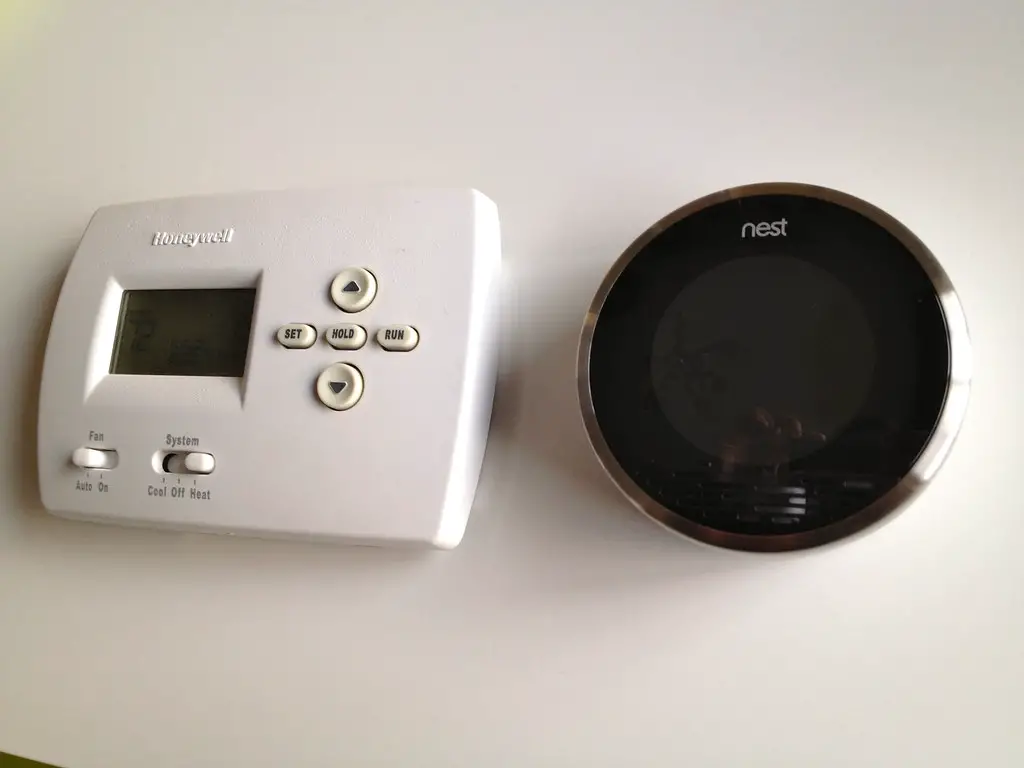Check Best Thermostat Pricing in Amazon
** As an Amazon Associate, I earn from qualifying purchases.
Equip your home with a nest thermostat to control zoned HVAC systems effectively. This intelligent device allows for personalized temperature settings in different zones, increasing comfort and energy efficiency. Experience the future of home climate control today.
Harnessing Comfort with Nest Thermostat Zoned System
Embracing modernization and the advent of technology in day-to-day life, the concept of smart home climate control has made a significant impact. Especially the Nest thermostat zoned system, a redefining technology that has opened a new arena for comfort, efficiency, and environmental preservation. However, before diving into the topic, let’s first understand the concept of a zoned heating and cooling system.
Redefining Comfort: Zoned Heating and Cooling System
The fundamental concept of a zoned heating and cooling system is to divide your home into different ‘zones’ where each area has its temperature control system. This mechanism allows for individualized comfort in different rooms and aids in energy conservation.
The zoned system consists of dampers in the ductwork that regulate airflow, controlled by a central panel that manages the temperature readings from different thermostats installed in each zone. When a particular zone needs temperature adjustment, the panel opens or closes the damper to control the temperature in each zone individually.
The concept of a zoned system is not new, but the integration of smart thermostats like Nest thermostats into these systems has modernized the idea significantly.
The integration of Nest has brought along a level of convenience and a degree of control unheard of before. The innovative design of the Nest thermostat zoned system, utilizing smart technology, facilitates convenience and energy efficiency alongside comfort.
The Role of Nest Thermostat in a Zoned System
The Nest thermostat, designed for efficiency, allows homeowners to regulate their home’s temperature with ease. The operation involves determining the temperature preference of the inhabitants and then appropriately changing the settings to match those preferences.
In a zoned system, multiple Nest thermostats can be installed, each controlling the temperature of its zone independently, depending on individual comfort preferences. This flexibility is particularly advantageous in multi-level homes or large properties where the temperature may differ from room to room.
Besides offering customizable temperature control, Nest thermostats also help track energy usage and provide feedback to homeowners. This useful feature allows one to monitor their power consumption and make necessary adjustments to save on energy bills.

Achieving Energy Efficiency with Nest Thermostat Zoned System
One of the most distinguishing features of the Nest thermostat zoned system is its energy efficiency. The intuitive “Eco Temperatures” feature of Nest thermostats automates energy saving when no one is home. With this feature, the device adjusts the temperature to a preset level, thereby saving energy. Multiple zoning is an additional advantage. It further enhances energy efficiency as it minimizes the energy used in unoccupied areas.
Remote Controllability: Anytime, Anywhere
Modern life and its ever-increasing hustle make it quite challenging to keep up with in-home aspects like climate control. The Nest thermostat zoned system has a viable solution. The system uses WiFi communication, which allows homeowners to control the thermostats remotely from a smartphone, tablet, or any smart device. The Nest App acts as the command center for controlling, monitoring, and receiving alerts.
You could adjust your home’s temperature while sitting in your office or even when you are out of town. Instant alerts inform about any considerable temperature variations, assuring that your home’s temperature is maintained within a comfortable range.
Furthermore, with the Nest App, you can even view the history of your heating or cooling operations. Receiving this kind of detailed data about your home’s climate control system can help you better adjust your usage for optimal energy efficiency and comfort.
Synergy with Other Smart Home Devices
Another advantage of the Nest thermostat zoned system is its compatibility and synergy with other smart home devices. It works well with Google Home, Amazon Alexa, and other smart systems, facilitating integrated control over your smart home devices. This compatibility allows for the automation and remote control of various appliances, simply based on your thermostat settings and routines.
For instance, integration with smart lights can be programmed to go on or off depending on your presence at home, determined by your thermostat settings. Likewise, your security system can also be synced to arm itself when your thermostat is set to ‘Away’ mode.
The Nest thermostat zoned system not only brings comfort and convenience but also plays a critical role in assisting with the overall smart home automation system. This synergistic approach further enhances the usefulness and operability of the Nest thermostat, making it an impressive addition to any modern smart home.
In essence, the Nest thermostat zoned system is a commendable solution for those seeking comfort, convenience, and efficient energy use. With its easy-to-use interface, automated controls, remote access, and the ability to work in synergy with other smart devices, it surely is a formidable ally for the modern, digital-age homeowner. From facilitating comfortable living to assisting in energy conservation, the system stands tall in delivering a magnanimous impression.
Check Best Thermostat Pricing in Amazon
** As an Amazon Associate, I earn from qualifying purchases.
Understanding Zoned Systems with Nest Thermostat
Integrating a zoned system with a Nest thermostat provides several benefits for household comfort and energy efficiency. With a Nest thermostat and zoned system integration, you can control the temperature of different areas in your home independently. This can lead to significant savings on your energy bills. Moreover, the smart features of the Nest thermostat, like learning your schedules and adjusting temperatures accordingly, ensure optimal comfort and energy usage.
Setting up a zoned system with a Nest thermostat involves the installation of thermostats in different zones, all of which connect to the central HVAC system. Each zone can be controlled independently using the Nest thermostat. The thermostat uses intelligent algorithms to learn the preferences and schedules of the homeowners for each zone, thereby creating a comfortable and energy-efficient home environment.
Frequently Asked Questions
Curious about a nest thermostat zoned system? Want to know how it works and the benefits it offers? Here are some common questions and clear, comprehensive answers.
What is a nest thermostat zoned system, and how does it work?
A Nest thermostat zoned system is a setup where multiple Nest thermostats control different zones in a home. Each thermostat regulates the heating and cooling in its particular zone. This allows for customized temperature control for different areas in your house, depending on your preferences and the specific needs of the zone.
These systems work by communicating with your heating and cooling system to direct warm or cool air where it’s needed. The thermostat uses sensors to determine the current temperature of its zone and adjusts accordingly. With a zoned system, you can enjoy optimal comfort in your home while saving energy.
What are the benefits of using a Nest thermostat-zoned system?
Implementing a zoned system with Nest thermostats can offer significant benefits. First, it offers more control over the temperature in your home. You can set distinct temperatures for different zones according to their needs. For instance, a room with many windows may need more cooling in the summer than other parts of the house.
Another major advantage is the potential for energy savings. Since you’re not heating or cooling the entire house to the same temperature, you’re only using the energy needed for each zone. This can result in reduced energy usage and, consequently, lower energy bills.
Can I install a nest thermostat zoned system myself?
While Nest thermostats are designed for do-it-yourself installation, setting up a zoned system may be more complex, especially if your house still needs to be zoned. The process of zoning a house usually involves the installation of dampers in the ductwork and can require professional HVAC knowledge.
If your house is already zoned, installing a Nest thermostat can be straightforward, but it’s always recommended to seek the help of a professional if you’re unsure. Their expertise can ensure that the system is installed correctly and functioning properly.
How do I program my next thermostat for my zoned system?
The Nest thermostat features a user-friendly interface that allows you to program the temperature for your zoned system easily. After installation, you can input your preferred temperature settings for different times of the day. The thermostat learns your schedule and adapts, but you can also manually adjust settings anytime through the Nest app.
If you have a zoned system, you can independently program each Nest thermostat in your multiple zones. This allows for precise control over the temperature in each zone, catering to your specific needs and preferences.
Does the Nest thermostat zoned system work with all heating and cooling systems?
Most heating and cooling systems are compatible with Nest thermostats, including conventional forced air, heat pumps, radiant heating, oil, hot water, solar, and geothermal systems. It is designed to work with 24-volt systems, also known as low-voltage systems. However, high-voltage systems, like electric baseboard heaters, are typically not compatible with Nest thermostats.
A zoned system requires dampers in the ductwork that can open and close to control the flow of air into each zone. Not all systems have this feature installed by default, so you might need to have these installed if setting up a zoned system. As mentioned, for zoned systems or homes with complex HVAC systems, it’s always recommended to seek professional help for installation.
Setting Up 3 Google Nest Thermostats In A Multi-Zone Home
Nest Thermostat-zoned systems allow you to manage the temperature in different areas of your home. With these systems, you can achieve a consistent level of comfort throughout your space, saving on energy bills in the process by enabling you to heat or cool areas only when necessary.
Implementing a Nest thermostat zoned system may require a bit of legwork, especially if your home doesn’t currently have zone control in place. Always seek professional assistance during installation to ensure that your system operates optimally. Ultimately, the flexibility and control you gain over your home’s climate can enhance your living experience.
Check Best Thermostat Pricing in Amazon
** As an Amazon Associate, I earn from qualifying purchases.


